A scalar has ______.
A vector has ______ and ______.
Scalar: magnitude
Vector: magnitude & direction
Draw the corresponding velocity vs time graph.
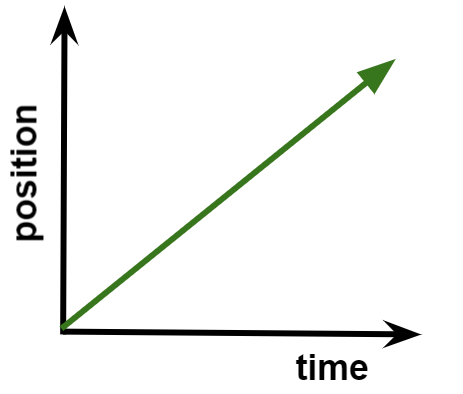
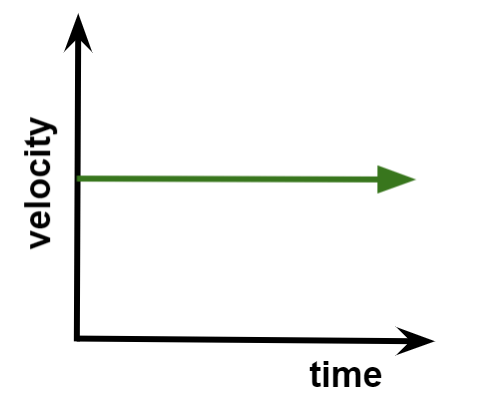
You are about to miss the school bus! It is 22.5 m away from you and will leave the bus stop in 8.25 seconds. What is the minimum velocity you must run at to catch the bus?
v = 2.73 m/s
What is free fall, and does it care about mass?
Ms. D. runs 5 miles around a local lake and returns to her starting position.
What is her total distance traveled? Total displacement?
Distance = 5 miles
Displacement = 0 miles
Draw the corresponding velocity vs time graph.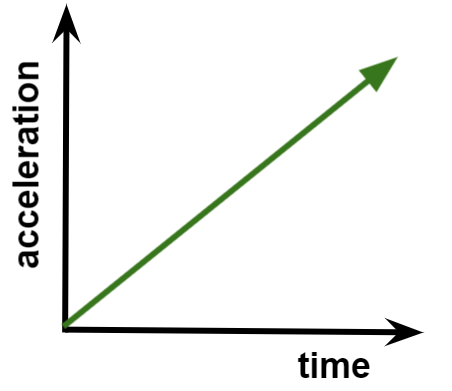
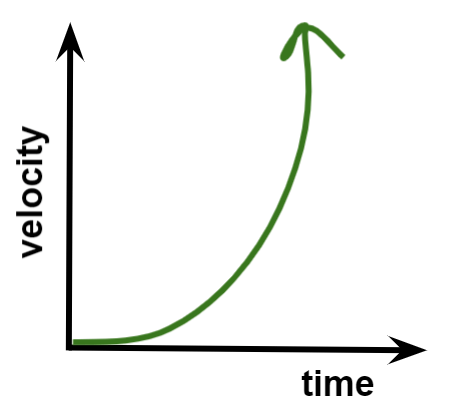
Willows sitting outside when she spots a squirrel at the location x = 3.0 m. She jumps up and chases it. Her equation of motion is described by the following equation: 
When does Willow catch the squirrel?
2.9 seconds
You throw a baseball upward with an initial velocity of 8.2 m/s. How long does it take for the baseball to reach the top of it's arch? g = +9.81 m/s2
t = 0.84 seconds
Bacteria move back and forth by using their flagella. These organisms travel a large distance, but their displacement is relatively small. Explain. 
They squiggle around a very small area, so their overall change in position is small.
Draw the position vs time graph that represents the following scenario:
Willow is asleep on the couch for a while. Ms. D. yells, "Food time!" and Willow accelerates to her food bowl. After quickly eating her food, Willow slowly walks back to her place on the couch.
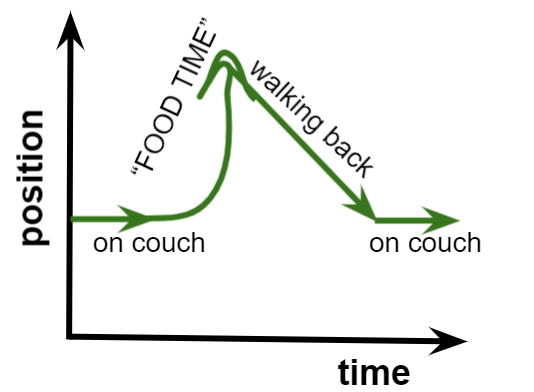
An airplane lands with a velocity of +81.9 m/s traveling due east. It comes to a full stop over 949 m. Find the acceleration of the plane. (Assume constant acceleration)
a = -3.53 m/s2
You’re mad that you have to take this physics test, so you drop your physics book from rest into a volcano. Gravity accelerates the book at 9.8 m/s2. How fast is your physics book plummeting towards the lava after 5 seconds? (Ignore air resistance.)
vf = 49.0 m/s
If the velocity of a particle is nonzero, can the particle’s acceleration be zero? Explain.
Yes. Acceleration is the time rate of change of the velocity of a particle. A particle can be moving at a constant velocity.
Draw the velocity vs time plot for the following scenario:
You slow down as you pull into your driveway. You start to park when you realize you forgot your Chromebook at school and reverse out of your driveway to go back to school.

You stub your toe on a table. It takes time for the nerve impulse from your poor toe to travel to your brain. If nerve impulses can travel at 120 m/s, approximately how long does it take for the signal to reach your brain in milliseconds?
Average height of American ~1.60 m
t = 13.3 ms
A beehive falls from a tree and hits the ground 0.68 s later. (Ignore air resistance.) g = +9.81 m/s2
(a) How far did the beehive drop?
(b) What was its speed when it hit the ground?
(a) xf = 2.23 m
(b) vf = 6.67 m/s
Is this object accelerating? Explain.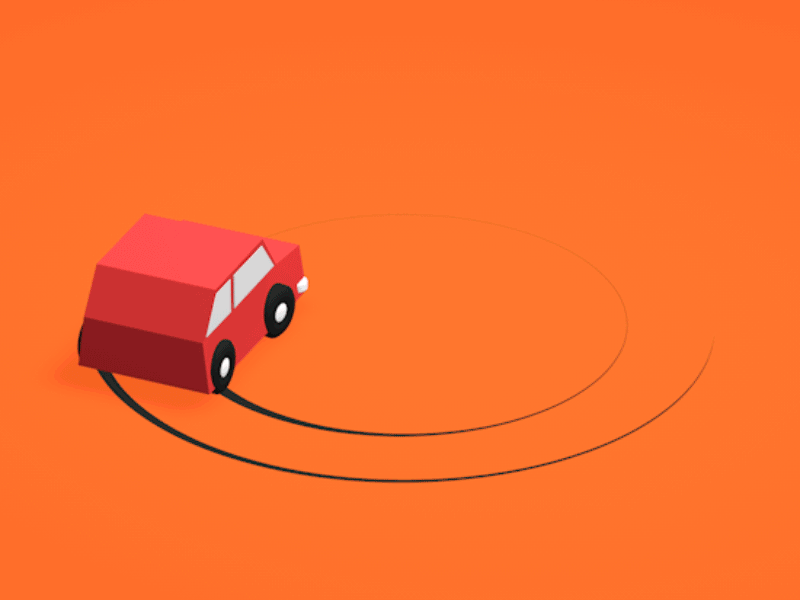
Yes. Even if it is traveling at the same speed, it is changing direction.
Draw the acceleration vs time plot for the following scenario:
You got new skates and are so excited to try them out! You lace them up and go speeding down and hill but immediately start braking to not run into a light pole.
*Assume constant accelerations.

It’s a dark and stormy evening, and you are driving with your friends to a cabin in the woods. You are driving carefully at 30 mph as you round the corners of the winding road. Suddenly, a monster jumps in the middle of the road approximately 10m ahead of you. You slam on the brakes and decelerate at a constant 3.80 m/s2. Do you hit the monster? Explain.
A kangaroo can jump over an object 2.50 m high.
(a) Calculate its vertical speed when it leaves the ground.
(b) How long is it in the air?
(a) v0 = 7.00 m/s
(b) t = 1.4 seconds